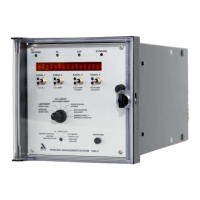16
4 Settings
4 Settings
4.1 Inputs
4.1.1 Significance of ID Number
The ID number comprises of 8 characters, e.g. 664 V 0010.
The two figures before the letter denote the unit, in this case a VMS 4.
The letter denotes whether the unit is a VMS or a . The penultimate figure provides information
on the unit hardware.
It also determines which connection diagram applies (see chapter 10.8 Connecting Dia-
grams).
4.1.2 Inputs
The inputs can be configured on the backplane by plug-in configuration cards. Any of the fol-
lowing can be connected up to each input:
– a potentiometer in range from 1 ... 5 k
– a current signal 0 … 20 mA or 4 … 20 mA
– a step signal (OPEN/CLOSE-commands)
– a frequency signal (Namur transmitter), for details see appendix
– a PT 100 element
– flame sensor module (in preparation)
There is a plug-in card for each configuration. This is inserted into the respective socket in or-
der to configure the input.
4.1.3 Configuration Sticker
The factory setting is entered on a sticker on the side of the unit.This corresponds either to the
customer data or, if nothing was specified, the standard setting (see condition on delivery).The
EEPROM checksums and thereby the software version are also entered on this sticker, to-
gether with the configuration number and hence the hardware setting.

